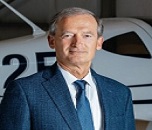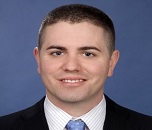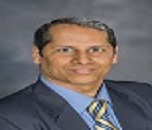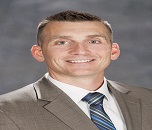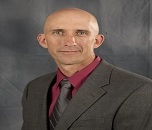Theme:
Mech Aero 2022
Conference Series LLC Ltd invites all the participants across the globe to attend the World Summit on Aerospace during December 19-20, 2022, Vancouver, Canada, with the theme of “Modern Practices in Mechanical & Aerospace Engineering “.
|
Conference Name |
Place |
Date |
|
Vancouver, Canada. |
December 1-2, 2022 |
Mechanical Aerospace - 2022 is an international podium for presenting research about mechanical and aerospace engineering and exchanging thoughts about it and thus, contributes to the propagation of information in both the academia and business.
Mechanical Aerospace - 2022 unites applications from various scientific disciplines, pushing the frontiers of Mechanical, Aerospace, Aerodynamics and Aeronautics. Mechanical Conference represents the huge area where the focus lies on developing product-related technologies with rapid advancement in research in recent years. It is true that fundamental work on materials has turned up with unexpected momentous discoveries, but more frequently, Mechanical Engineering Conferences, importance and significance can be gauged by the fact that it has made huge advancements over the course of time and is continuing to influence various sectors.
Aerospace conference is an emerging and challenging field in today's world. The mission of the aerospace expo is to educate the nation's future leaders in the science and art of mechanical and aerospace engineering. Further, seeks to expand the frontiers of engineering science and to persuade technological innovation while nurturing both academic and Industry excellence.
Why to attend???
This is your best opportunity to reach the largest assemblage of participants from the mechanical and aerospace community. Live Events -- which include Keynote Sessions, Workshops, Online Video Sessions; Poster Presentations provides a unique approach for learning and career building. Attendees will be having an opportunity to build networks with other Academics and Experts in Mechanical and Aerospace Engineering field from all over the world.
Target Audience
Engineers who are specialized on the particular topics like,
- Mechanical, Aerospace and Aeronautics
- Mechanical Societies and Associations
- Aerospace Societies and Associations
- Business Entrepreneurs
- Professors, Students, Researchers from Mechanical, Aerospace and Aeronautics
- Scientists and business professionals from Mechanical, Aerospace and Aeronautics
- Nobel laureates & MD/Presidents
- Departmental Head & Chairs
- Investors, Innovators
- Distributors, Resellers, and Traders
- Government Bodies such as Regulating Authorities and Policy Makers
- Venture Capitalists, Private Equity Firms, and Start-up Companies
Track 1: Fluid Mechanics:
Fluid Mechanics is the logical investigation of the mechanical properties of gasses and fluids. Fluid Mechanics can be partitioned into liquid statics, the investigation of liquids very still; and liquid motion, the investigation of the impact of powers on smooth movement. It incorporates these sub tracks Fluid-strong mechanics, Knots and connects in liquid mechanics, Stress and strain in liquid mechanics, Thermo liquid mechanics, Computational liquid progress and Fluid elements.
Related Societies and Associations:
The American Society of Mechanical Engineers, American Institute of Aeronautics and Astronautics, American Helicopter Society, The Royal Aeronautical Society and Society of Flight Test Engineers.
Track 2 Aerodynamics:
Aerodynamics is the method air travels around things. A streamlined feature is a sub-field of liquid elements and gas flow, and numerous parts of optimal design hypothesis are normal to these fields. It contains Projectile streamlined features, Aero warming, Aero-motor combustors and Aero-versatile displaying.
Related Societies and Associations:
Aerospace Industries Association, AHS International - The Vertical Flight Society and American Astronautical Society.
Track 3 Airship Design and Development:
An airship or aircraft is a type of aerostat or lighter-than-air aircraft which can circumnavigate through the air under its own power. It includes remotely organized airship design, Bio inspired and bio-mimetic micro flyers, Electric aircraft concept for unmanned air vehicles and armed flight, remotely organized airship design and Design and modeling of solar-powered aircrafts.
Related Societies and Associations:
Association for Unmanned Vehicle Systems International, Experimental Aircraft Association and Society of Flight Test Engineers.
Track 4 Flight Vehicle Navigation:
It is a arena of study that prominences on the method of observing and governing the program of a craft or motor vehicle from one place to another. It includes unified aircraft and underwater steering, Steering of land vehicles in battle field, Satellite broadcasting based and ground based air navigation, GPS-based relative navigation of satellites and Controller, steering and smash avoidance for unmanned inflight vehicle.
Related Societies and Associations:
The American Society of Mechanical Engineers, American Institute of Aeronautics and Astronautics, American Helicopter Society, The Royal Aeronautical Society and Society of Flight Test Engineers.
Track 5 Vehicle Systems and Technologies:
Engine vehicle following framework consolidates the utilization of programmed vehicle area in individual vehicles with programming that gathers these taskforce evidence for a far reaching picture of vehicle areas. It involves Mechanics in cars, Air vehicle frameworks and advancements, Flight/Ground frameworks, mission arranging and operations and Dynamical investigation of vehicle frameworks.
Related Societies and Associations:
Aerospace Industries Association, AHS International - The Vertical Flight Society and American Astronautical Society.
Track 6 Design and Modelling of Aircraft:
It includes Engine amalgamation of light sport aircraft, new aero engine ideas, Strategy and displaying of military helicopters, Helicopter auto-pilot design Propeller speed control for unified airplane engine and Non-natural intelligence in aircraft design.
Related Societies and Associations:
The American Society of Mechanical Engineers, American Institute of Aeronautics and Astronautics, American Helicopter Society, The Royal Aeronautical Society and Society of Flight Test Engineers.
Track 7 Robotics and Mechatronics:
Robotics is the branch of innovation that arrangements with the configuration, development, operation, and utilization of robots. Mechatronics is the branch of science that consolidating hardware and mechanical designing. These incorporate Bio-enlivened movement for wheeled portable robots, Potential utilization of robots on additional physical bodies, Pneumatic counterfeit muscles for mechanical hand and Aero-space apply autonomy and challenges.
Related Societies and Associations:
IEEE Robotics and Automation Society, Danish Industrial Robot Association, Automated Imaging Association and the Robotics Society of America.
Track 8 Design and Development of Rockets:
It is the main branch of engineering concerned with the analysis, design process, development, creation, testing, science and technology of aircraft and spaceship. It includes planetary mission design and Space propulsion.
Related Societies and Associations:
The American Society of Mechanical Engineers, American Institute of Aeronautics and Astronautics, American Helicopter Society, The Royal Aeronautical Society and Society of Flight Test Engineers.
Track 9 Space Engineering:
It includes Planetary mission design, Interstellar propulsion and Bio-regenerative life livelihood systems.
Related Societies and Associations:
Aerospace Industries Association, AHS International - The Vertical Flight Society and American Astronautical Society.
Track 10 Bioengineering and Biomechanics:
It is the utilization of the life sciences, physical sciences, arithmetic and building standards to characterize and tackle issues in science, solution, medicinal services and different fields. It incorporates Biomaterial and nano innovation, Bio-medicinal miniaturized scale gadgets, Micro building, Biomedical designing and Development of biomechanics for human life structures.
Related Societies and Associations:
American Society of Biomechanics, Canadian Society for Biomechanics and European Society of Biomechanics.
Track 11 Materials processing:
It is the arrangement of operations that changes mechanical materials from a crude material state into completed parts or items. It incorporates Advanced material handling and properties, Nano mechanics and multi-physical science, Synthesis and material portrayal, Multiscale material configuration, Nano-material preparing and Material stream and ignition.
Related Societies and Associations:
Brazilian Association for Materials and Metallurgy, American Chemical Society, American Institute of Mining, Metallurgical, and Petroleum Engineers and Association For Manufacturing Technology.
Track 12 Energy Processing:
Energy processing is a property of objects which can be transferred or converted into different forms, but cannot be formed or destroyed. It comprises Industrial plasma processing, Radiation processing, Bio-energy production, Acoustic energy and Energy savings in thermal processing.
Related Societies and Associations:
International Centre for Heat and Mass Transfer, The Japan Society of Mechanical Engineers and The Society of Chemical Engineers, Japan.
Track 13 Mechanics, Dynamics and Controls:
Mechanics is a subdivision of physics (specifically classical mechanics) concerned with the study of forces and torques and their outcome on motion, as divergent to kinematics, which studies the motion of objects without reference to its causes. It includes Solid mechanics, Dynamism and wave transmission in solids, Advanced acoustics, Astrodynamics and Air traffic controller systems.
Related Societies and Associations:
IEEE Robotics and Automation Society, Danish Industrial Robot Association, Automated Imaging Association and The Robotics Society of America.
Track 14 Heat transfer system:
It defines the interchange of thermal energy, between material systems depending on the heat and mass by disintegrating heat. The essential modes of heat transfer are transference or diffusion, convection and radiation. It includes Nuclear energy, Heat transfer in fire and ignition and Heat transfer in automated equipment.
Related Societies and Associations:
International Centre for Heat and Mass Transfer, The Japan Society of Mechanical Engineers and The Society of Chemical Engineers, Japan.
Track 15 Applications of Aerospace technology:
It is a field that explains about the specialized side of aviation missions instead of flight preparing or support administration. It Includes Communications satellite applications, Remote detecting satellite applications, Navigation satellite applications, Satellite and launcher innovation, Ultra wideband advances for space applications, Science and stargazing and Astrobiology.
Related Societies and Associations:
Aerospace Industries Association, AHS International - The Vertical Flight Society and American Astronautical Society.
Track 16 Mechanical Engineering and Management:
Mechanical Engineering and Management covers mechanical and producing designing, while the administration angles spread modern association and money related reporting and administration of individuals and frameworks .It contains Operations administration, Logistics and store network administration, Reliability and support designing, Total quality administration and quality designing and Industrial administration in mechanical building. Connected mechanics: It is a branch of the physical sciences and the down to earth use of mechanics. It incorporates Recent advances in Mechanical Engineering, Tools and programming in Mechanical Engineering, Mechanical Engineering Companies and Market investigation and Mechanical Engineering Design.
Related Societies and Associations:
The American Society of Mechanical Engineers, American Institute of Aeronautics and Astronautics, American Helicopter Society, The Royal Aeronautical Society and Society of Flight Test Engineers.
Track 17 Industrial Engineering:
It is concerned with the development, improvement & implementation of integrated systems of materials, equipment, energy, design, analysis, as well as the software tools used in industries. Traditionally industrial engineering might be used to plan the layouts of factories, designing assembly lines and other manufacturing paradigms. Modern industrial engineers typically use predetermined motion time system, computer simulation and mathematical tools for modeling. Software tools such as Plant Design Management (PDM) are used to make the layout of the factory or industry.
Related Societies and Associations:
The American Society of Mechanical Engineers, American Institute of Aeronautics and Astronautics, American Helicopter Society, The Royal Aeronautical Society and Society of Flight Test Engineers.
The key data show that Mechanical Engineering is one of the major branches of industry in the EU-27 with a share of around 9.1% of all manufacturing industries, as measured by production. The U.S. aerospace industry contributed $118.5 billion in export sales to the U.S. economy. The global commercial aerospace seating market is expected to grow at a CAGR of 5.2% over 2015-2025.
In 2012, the U.S. aerospace industry contributed $118.5 billion in export sales to the U.S. economy. The industry’s positive trade balance of $70.5 billion is the largest trade surplus of any manufacturing industry and came from exporting 64.3 percent of all aerospace production. Industry estimates indicate that the annual increase in the number of large commercial airplanes during the next 20 years will be 3.5 percent per year for a total of 34,000 valued at $4.5 trillion (list prices).
U.S. machinery industries had total domestic and foreign sales of $413.7 billion in 2011. The United States is the world’s largest market for machinery, as well as the third largest supplier. American manufacturers held a 58.5 percent share of the U.S. domestic market. More than 1.3 million Americans were employed directly in manufacturing machinery and equipment in August 2013. These jobs are almost entirely in high-skill, well-compensated professions and trades. Machinery manufacturing also supports the jobs of hundreds of thousands of Americans in a variety of other manufacturing and service industries.
Conference Highlights
- Fluid Mechanics
- Aerodynamics
- Airship Design and Development
- Flight Vehicle Navigation
- Vehicle Systems and Technologies
- Design and Modelling of Aircraft
- Robotics and Mechatronics
- Design and Development of Rockets
- Space Engineering
- Bioengineering and Biomechanics
- Materials processing
- Energy Processing
- Mechanics, Dynamics and Controls
- Heat transfer system
- Applications of Aerospace technology
- Mechanical Engineering and Management
- Industrial Engineering
To share your views and research, please click here to register for the Conference.
To Collaborate Scientific Professionals around the World
| Conference Date | December 01-02, 2022 | ||
| Sponsors & Exhibitors |
|
||
| Speaker Opportunity Closed | |||
| Poster Opportunity Closed | Click Here to View | ||
Useful Links
Special Issues
All accepted abstracts will be published in respective Our International Journals.
Abstracts will be provided with Digital Object Identifier by







